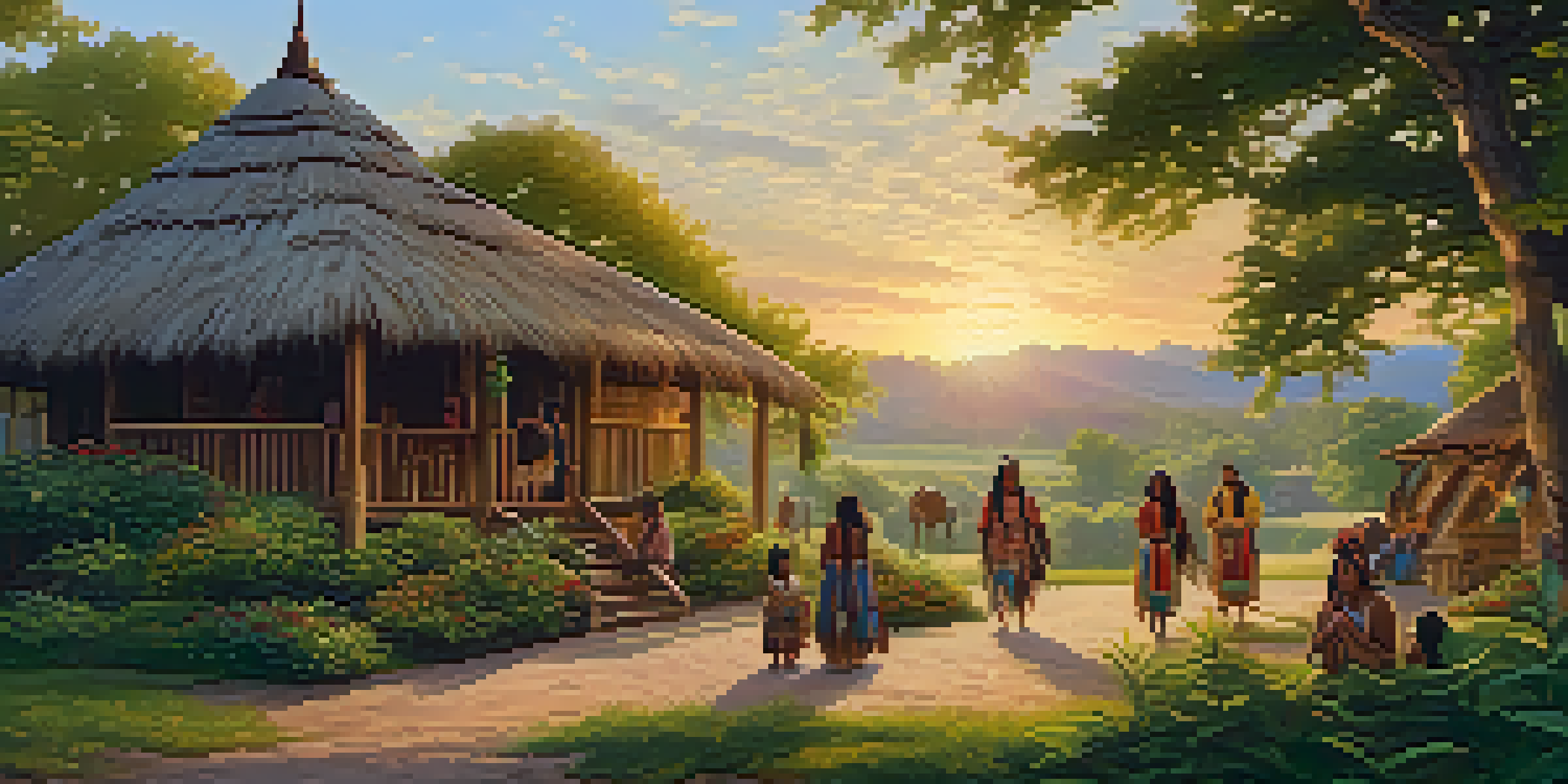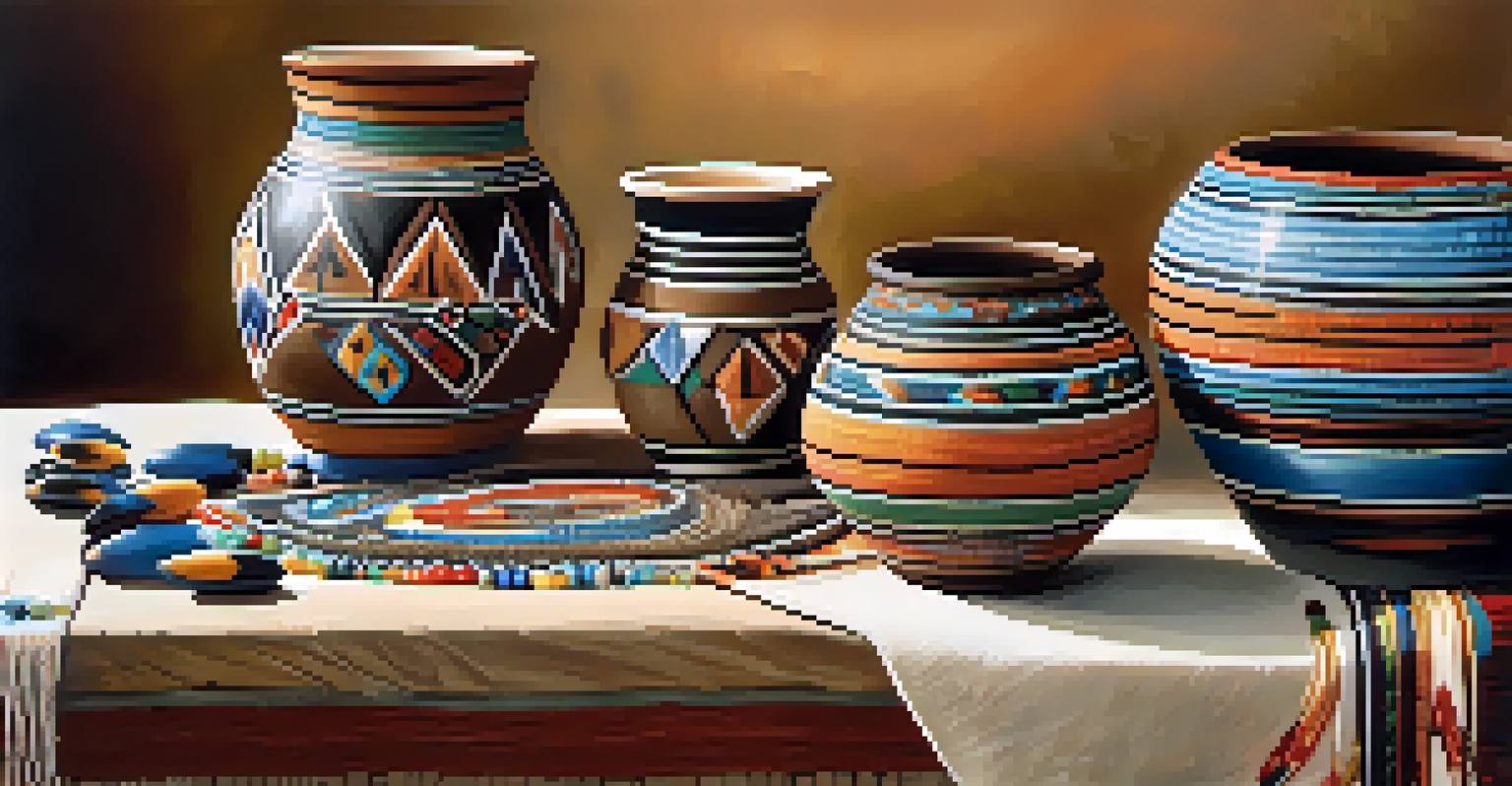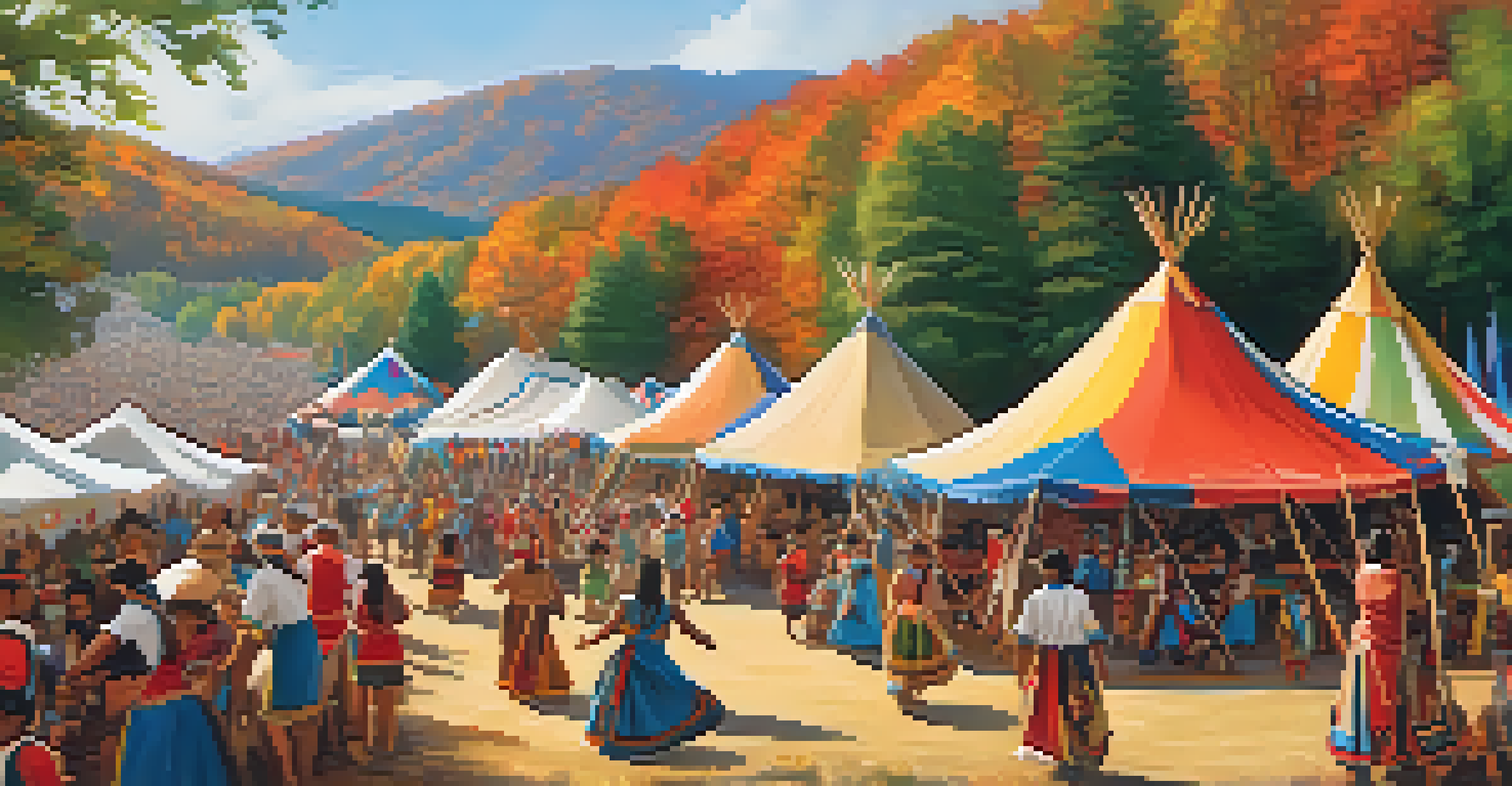Native American Communities and Their Influence in Georgia

A Brief History of Native American Communities in Georgia
Native American communities have inhabited Georgia for thousands of years, with tribes such as the Cherokee, Creek, and Choctaw playing significant roles in the region's history. These tribes developed rich cultures, languages, and social structures that shaped the landscape of what is now Georgia.
The land is sacred. It is not ours; it is a gift we hold in trust for future generations.
As European settlers arrived, many Native American communities faced immense challenges, including displacement and cultural assimilation. The impact of colonization was profound, leading to the forced removal of tribes, particularly during the infamous Trail of Tears in the 1830s.
Despite these hardships, many Native American communities in Georgia have persevered, preserving their traditions and contributing to the state's cultural tapestry. Understanding their history is essential to appreciating their ongoing influence.
Cultural Contributions of Native American Tribes
The cultural influence of Native American tribes in Georgia is evident in various aspects of life, from art to agriculture. Traditional crafts such as pottery, weaving, and beadwork showcase the artistic skills passed down through generations.

Moreover, native plant cultivation and sustainable farming techniques introduced by these tribes have left a lasting mark on Georgia's agricultural practices. Many local farmers still utilize methods rooted in Native American traditions.
Rich Native American History
Native American communities in Georgia, such as the Cherokee and Creek, have a profound historical presence that has shaped the region's cultural landscape.
Festivals and events celebrating Native American heritage, such as the annual Southeastern Woodlands Festival, further highlight the vibrant culture and community spirit that continues to thrive in Georgia today.
The Role of Native American Languages
Native American languages are an essential part of the cultural identity for tribes in Georgia. Languages like Cherokee and Creek not only convey stories and traditions but also embody the community's worldview and connection to the land.
When we heal the earth, we heal ourselves.
Revitalization efforts are underway to teach these languages to younger generations, ensuring that this vital aspect of their heritage is not lost. Language classes and immersion programs are gaining popularity among tribal members.
The preservation of these languages is crucial, as language often shapes how people perceive and interact with their environment. By maintaining their languages, Native American communities in Georgia foster a deeper connection to their history and culture.
Modern-Day Native American Communities
Today, Native American communities in Georgia are vibrant and diverse, with many members actively participating in local, state, and national dialogues. They advocate for their rights, cultural preservation, and environmental stewardship.
The Georgia Tribe of Eastern Cherokee and the Muscogee (Creek) Nation are examples of tribes that have established a strong presence in the region. These communities engage in economic development initiatives, promoting self-sufficiency and cultural heritage.
Cultural Contributions Persist
The artistic, agricultural, and linguistic traditions of Native American tribes continue to influence Georgia's culture and practices today.
Modern challenges, such as land rights and economic disparities, continue to affect these communities. However, through resilience and unity, they are working towards a brighter future while honoring their past.
Influence on Georgia's Education System
Native American history and culture are increasingly being integrated into Georgia's education system. Schools are recognizing the importance of teaching students about the contributions and experiences of Native Americans in the state.
Programs and curricula that include Native American perspectives help foster a greater understanding of diversity and history among students. This educational approach promotes respect and appreciation for Indigenous cultures.
Collaborations between Native American tribes and educational institutions are also on the rise. These partnerships aim to provide resources, cultural exchanges, and programs that benefit both students and the communities involved.
Environmental Stewardship and Land Rights
Native American communities in Georgia have a deep-rooted connection to the land, advocating for environmental stewardship and sustainable practices. Many tribal members emphasize the importance of protecting natural resources for future generations.
Land rights remain a critical issue, as historical injustices have led to significant loss of territory. Native American tribes are actively involved in legal battles and negotiations to reclaim their ancestral lands and protect sacred sites.
Modern Advocacy and Challenges
Contemporary Native American communities in Georgia actively advocate for their rights and cultural preservation while facing ongoing challenges related to land and economic disparities.
Through these efforts, they are not only preserving their heritage but also contributing to the broader environmental movement. Their traditional ecological knowledge offers valuable insights into sustainable land management.
Celebrating Native American Culture in Georgia
Festivals and cultural events throughout Georgia celebrate Native American heritage, providing opportunities for community engagement and education. Events like powwows feature traditional dancing, music, and crafts, drawing participants from diverse backgrounds.
These celebrations foster unity and understanding, allowing attendees to experience the richness of Native American culture firsthand. They also serve as platforms for tribal members to share their stories and history.

By participating in these events, Georgians can gain a deeper appreciation for the contributions of Native American communities and their ongoing influence in the state.